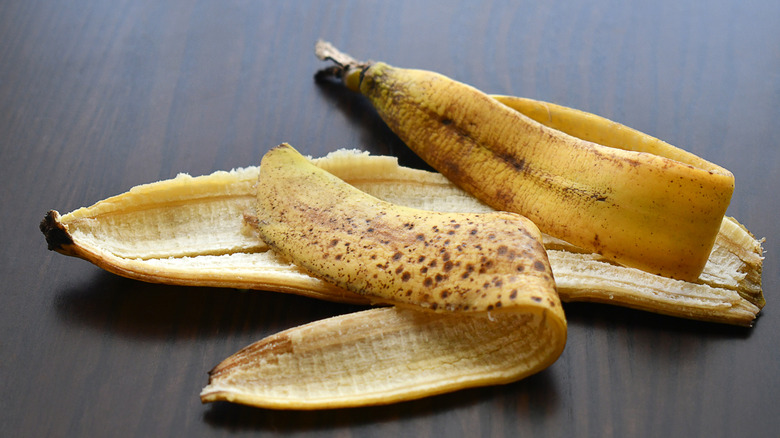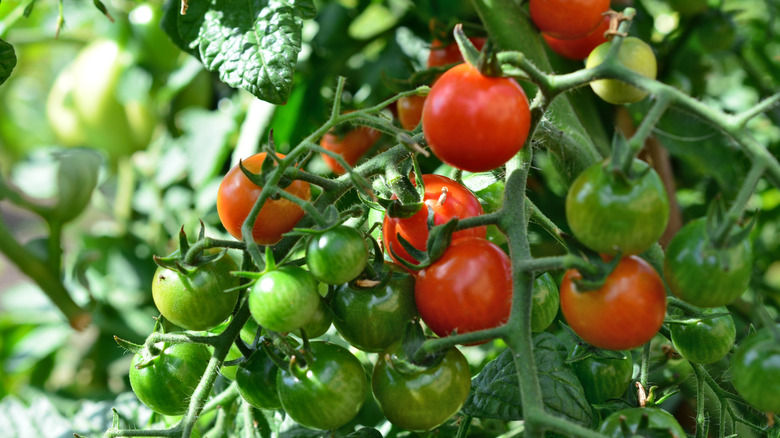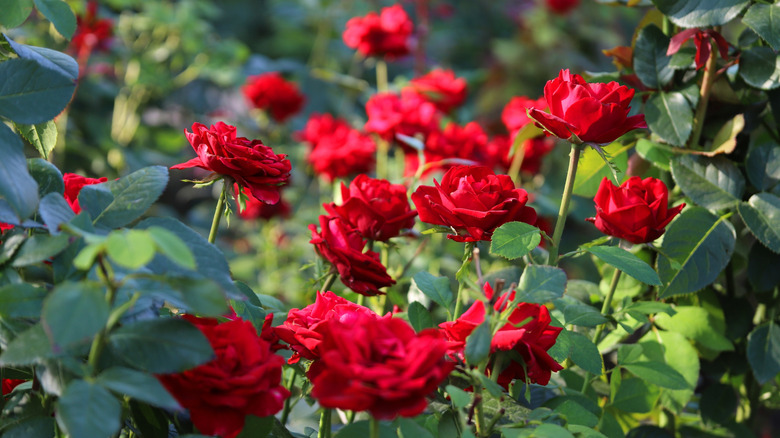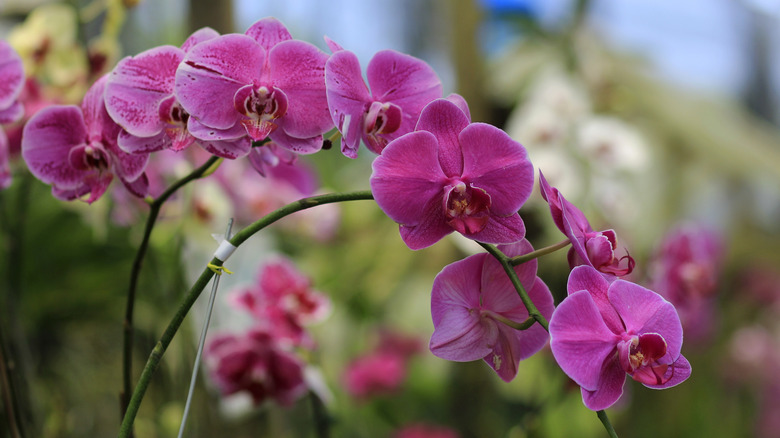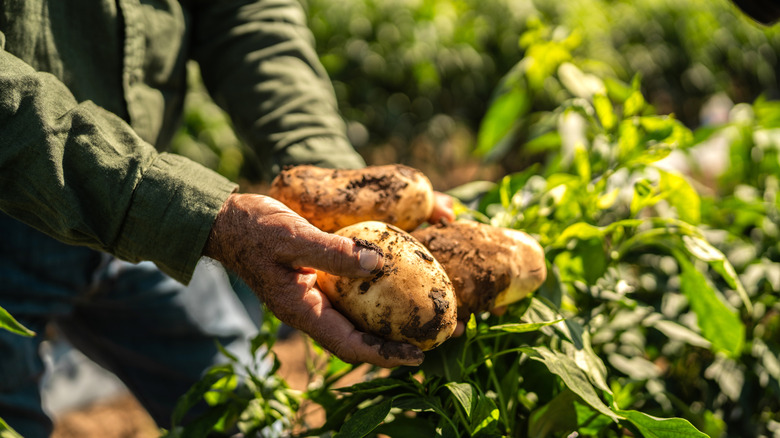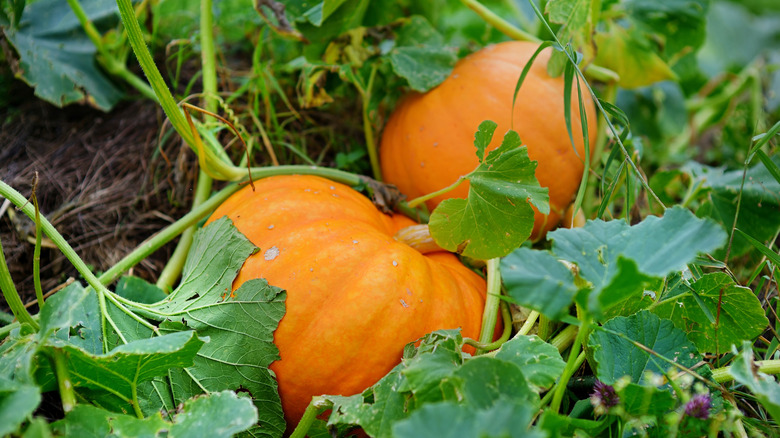Always Keep Your Banana Peels, Here Are The Plants That Love Them
Before you toss your empty banana peels into the trash can, you may want to save a few for later. Not for you to eat, but for your plants to enjoy. Banana peels, whether they're chopped, sliced, or soaked in water, can be a natural fertilizer for your garden. These discarded peels are chock full of potassium, which many plants would love a boost of. They also contain magnesium, phosphorus, and calcium. Some plants, like tomatoes and roses, respond more positively to this banana treatment.
While research is limited on the effects of banana peels as fertilizer, there is usually no harm in giving your plants greater access to these beneficial nutrients. There are a few ways to transform the peels into fertilizer. One of the easiest and most effective ways is to simply chop up the peels into small pieces, adding them to your flower and veggie beds. Another is to soak them in water for about one week and turn the solution into a spray. Your method of choice may depend on what plants reside in your garden, but either approach will allow you to make the most of waste without much effort.
Tomatoes
Thanks to their high potassium content, banana peels make for a healthy fertilizer addition for tomato plants. Plus, these peels don't contain nitrogen, which is especially helpful for tomatoes, as excess nitrogen can cause too much leafy growth. You can bury the peels directly in the soil, about 2 to 3 inches deep. To extract as many nutrients as possible from the peels, it's recommended to cut up the peels before tossing them into your soil, as this will help them decompose faster. Your tomato plants will thrive on this nutrient-rich fertilizer.
Peppers
Like tomatoes, peppers require nutrients like potassium and calcium to grow their large, colorful produce. Discarded banana peels make for an excellent fertilizer addition, thanks to their rich nutrient makeup. One option is to soak your banana peels in a jar of water for about 24 to 72 hours and pour the contents directly into the soil of your pepper beds. You can also dig a hole and bury your banana peels right next to your pepper plants, which will ideally feed on the decomposing fruit.
Roses
Banana peels can also be beneficial to non-vegetables, like your rose bushes. Rose plants require macronutrients such as potassium and phosphorus, both of which banana peels contain. While potassium works to protect roses from disease and damage, phosphorus boosts roses' root and flower development. To give your rose bushes a natural boost with this kitchen scrap, cut up your banana peels into small pieces or leave them whole and bury them around your roses so they can quickly decompose around the plant roots.
Ferns
Ferns are yet another plant that can potentially benefit from DIY banana peel fertilizer. These beauties also require the same key nutrients: magnesium and calcium. You can water your ferns with the banana peel solution about once a week, or as often as you typically tend to water them. Note that if your ferns are indoors, you may want to reduce your use of banana liquid fertilizer, as it may attract unwanted, sweet-loving insects or flies.
Orchids
If you want your orchids to produce large, stunning blooms, you may want to consider making your own banana peel fertilizer. You can cut up the peels before soaking them in water to help the plant absorb the nutrients faster. You can apply the solution to the orchid's leaves using cotton pads or pour it directly into the soil. When using banana-based fertilizer for orchids, make sure to use it sparingly (about once a month) as opposed to every time you water them.
Potatoes
Potatoes have a very high demand for potassium, making them an excellent recipient of a DIY banana peel fertilizer. In fact, potatoes require more potassium than any other vegetable. The root veggie requires this nutrient because it works to transport sugar from the leaves of the plant to the tubers, as well as to resist diseases. You can apply your DIY fertilizer to your potato plant via liquid, sprinkle it on as a powder, or blend chopped banana peels with water to create a slurry, which you can pour directly onto the soil.
Pumpkins
As with other flowering vegetables, adding banana peels to pumpkin plants can be beneficial. Pumpkins require large amounts of phosphorus and potassium. While you can try the liquid fertilizer method or simply plant the peels in your soil, there is another possible option: dried banana fertilizer. Lay out your banana peels to dry in a warm spot until they have turned black. This should take about one to two days. Using a grinder or mortar and pestle, grind up the peels into a powder to add to your pumpkins' soil.
